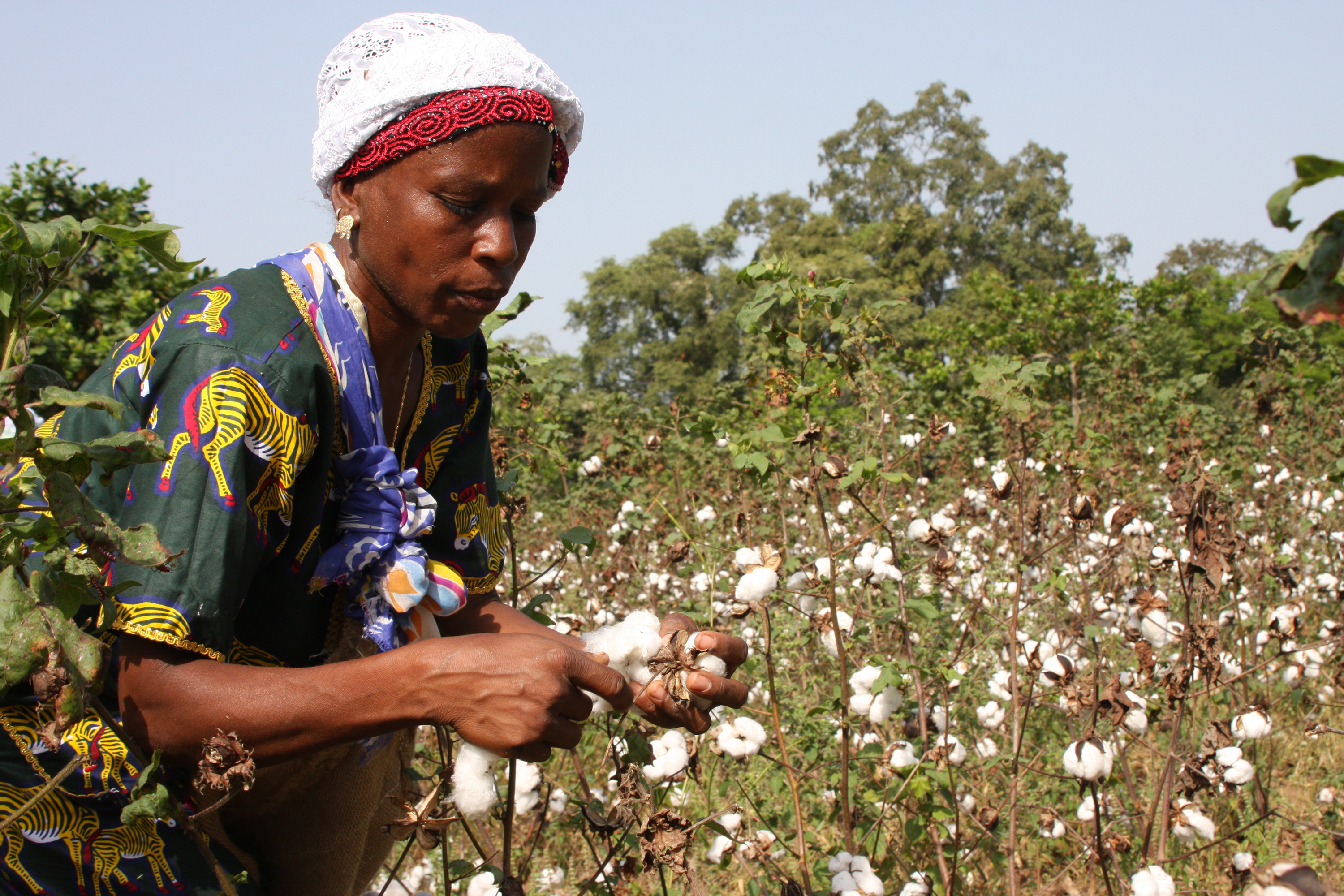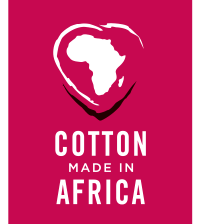
Cotton: The basis of life for millions of people
Cotton is grown in around 80 different countries. The total area under cultivation is about 30 million hectares (for comparison: Germany’s total area is about 35 million hectares). About 100 million households earn their living by cultivating or processing cotton. However, conventional cotton is often cultivated using catastrophic methods. Hardly any other plant is treated more frequently with pesticides and insecticides. Water consumption is also dramatic. A single kilogram of cotton contains an average of 11,000 liters of water. Cotton production suffers from an extremely bad reputation, and not only from an ecological point of view. Again and again there are reports about child labor, unreasonable working conditions, and starvation wages. In 2014, more than two-thirds of the cotton grown worldwide was genetically modified. Only 15 percent of the cotton grown worldwide is considered to be produced sustainably. There are currently five standards (the best known organic cotton labels are GOTS, Fairtrade Cotton, Cotton made in Africa, and the Better Cotton Initiative). They work using different criteria, but they are all much more sustainable than conventional cotton cultivation and processing methods.
more... (German only)
more... (German only)

Quelle: Sustainable Cotton Ranking, WWF
Water factor: CmiA cotton saves water and CO2
For Ulrike Bos (Fraunhofer Institute) and Dr. Susanne Neubert (Seminar for Rural Development (SLE) at Humboldt University Berlin), one thing is certain: “Compared to conventional and irrigated cotton, the cultivation of Cotton made in Africa (CmiA) cotton has less impact on the environment: Resources are used efficiently, and thus offer the possibility of minimizing the greenhouse gas emissions caused by cotton cultivation. Rain-fed agriculture also saves a great deal of water.” According to their study, CmiA cotton emits up to 40 percent fewer greenhouse gas emissions than conventional cotton. Additionally, CmiA cotton is grown exclusively with rainwater. Compared to the global average, CmiA cotton saves more than 2,100 liters of water per kilogram of cotton fiber.
more… (German only)
more… (German only)
Textile manufactures: Please more organic cotton!
Cotton is one of the most used natural fibers in the textile industry. However, conventional cultivation is often harmful to the environment. Clothing made of organic cotton is much more sustainable. However, it still accounts for only a small segment of cotton production. As Bart Vollard from the Organic Cotton Accelerator (OCA) initiative knows, organic cotton accounts for just 0.5 percent of the entire cotton market worldwide. “The demand for organic cotton is high, but the market and price structures are not working.” Crispin Argento of the OCA adds: “Private labels need a lot of organic cotton and farmers are not being paid properly.”
more… (German only)
more… (German only)
You can recognize sustainable cotton by these labels!
Further facts on the cotton industry from the UN-affiliated International Trade Center (ITC)
1. Highly concentrated market:
As world cotton production inevitably varies from year to year, variations in supply can cause wide fluctuations in price. The estimated nominal value of world exports dropped from a high of $13 billion in 1994/1995 to $6 billion in 2001/2002 and rebounded to approximately $12 billion in the 2005/2006 marketing season (August–July). World cotton trade is not highly concentrated compared to other commodities. About 500 firms are involved in cotton exports worldwide.
2. Growing productivity: World cotton exports reached 3.6 million tons in 1926/1927, and that level was not surpassed until the early 1950s. Exports climbed to 9.8 million tons in 2005/2006. The United States plays the leading role in cotton exports. Raw cotton was the United States’ largest merchandise export from 1803 through 1937, and the United States has been the largest cotton exporter since 1834 (with only one exception: in 1985/1986).
3. Political relevance: Cotton is also a very political crop because of its importance in world trade and to the economies of many developing countries. In many countries, cotton exports not only are a vital contribution to foreign exchange earnings but also account for a significant proportion of GDP and tax income. Cotton plays a major role in the economic development of Africa: 37 of the 53 African countries produce cotton, and 30 are exporters. Most Central Asian republics from the former Soviet Union are also very dependent on cotton exports.
Nevertheless, cotton represents a very small share of world trade in terms of value. In UNCTAD export statistics by product, cotton ranked 170th on average in 2004/2005 values, accounting for 0.11 percent of world product exports in 2005 ($11.4 billion).
Source: ITC
2. Growing productivity: World cotton exports reached 3.6 million tons in 1926/1927, and that level was not surpassed until the early 1950s. Exports climbed to 9.8 million tons in 2005/2006. The United States plays the leading role in cotton exports. Raw cotton was the United States’ largest merchandise export from 1803 through 1937, and the United States has been the largest cotton exporter since 1834 (with only one exception: in 1985/1986).
3. Political relevance: Cotton is also a very political crop because of its importance in world trade and to the economies of many developing countries. In many countries, cotton exports not only are a vital contribution to foreign exchange earnings but also account for a significant proportion of GDP and tax income. Cotton plays a major role in the economic development of Africa: 37 of the 53 African countries produce cotton, and 30 are exporters. Most Central Asian republics from the former Soviet Union are also very dependent on cotton exports.
Nevertheless, cotton represents a very small share of world trade in terms of value. In UNCTAD export statistics by product, cotton ranked 170th on average in 2004/2005 values, accounting for 0.11 percent of world product exports in 2005 ($11.4 billion).
Source: ITC






